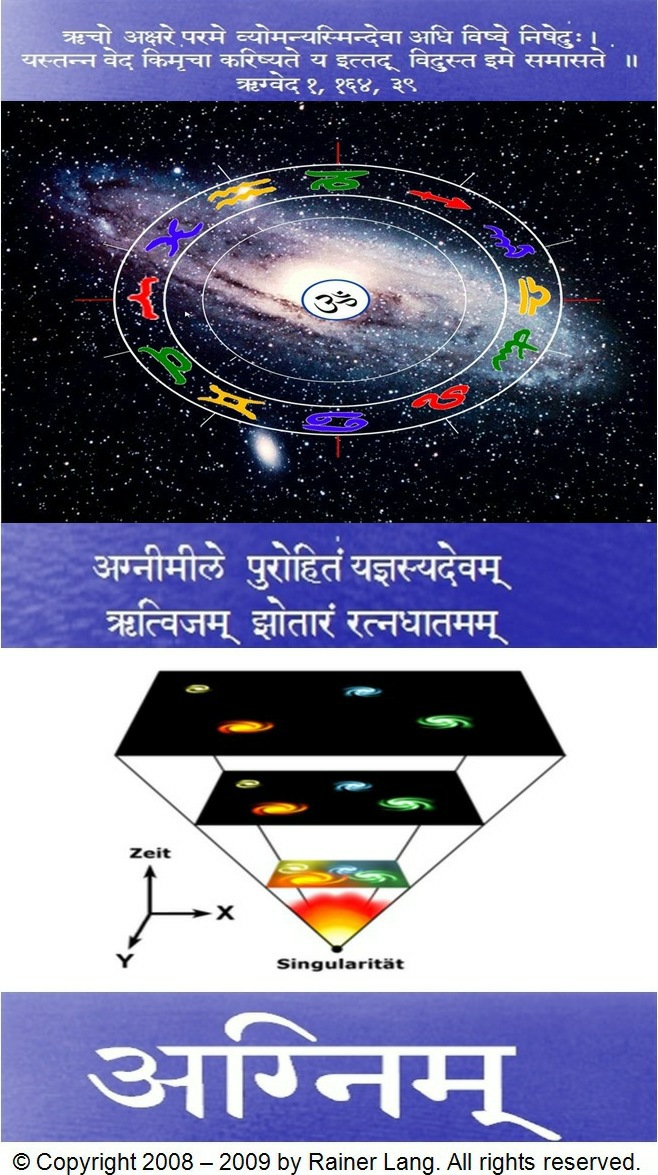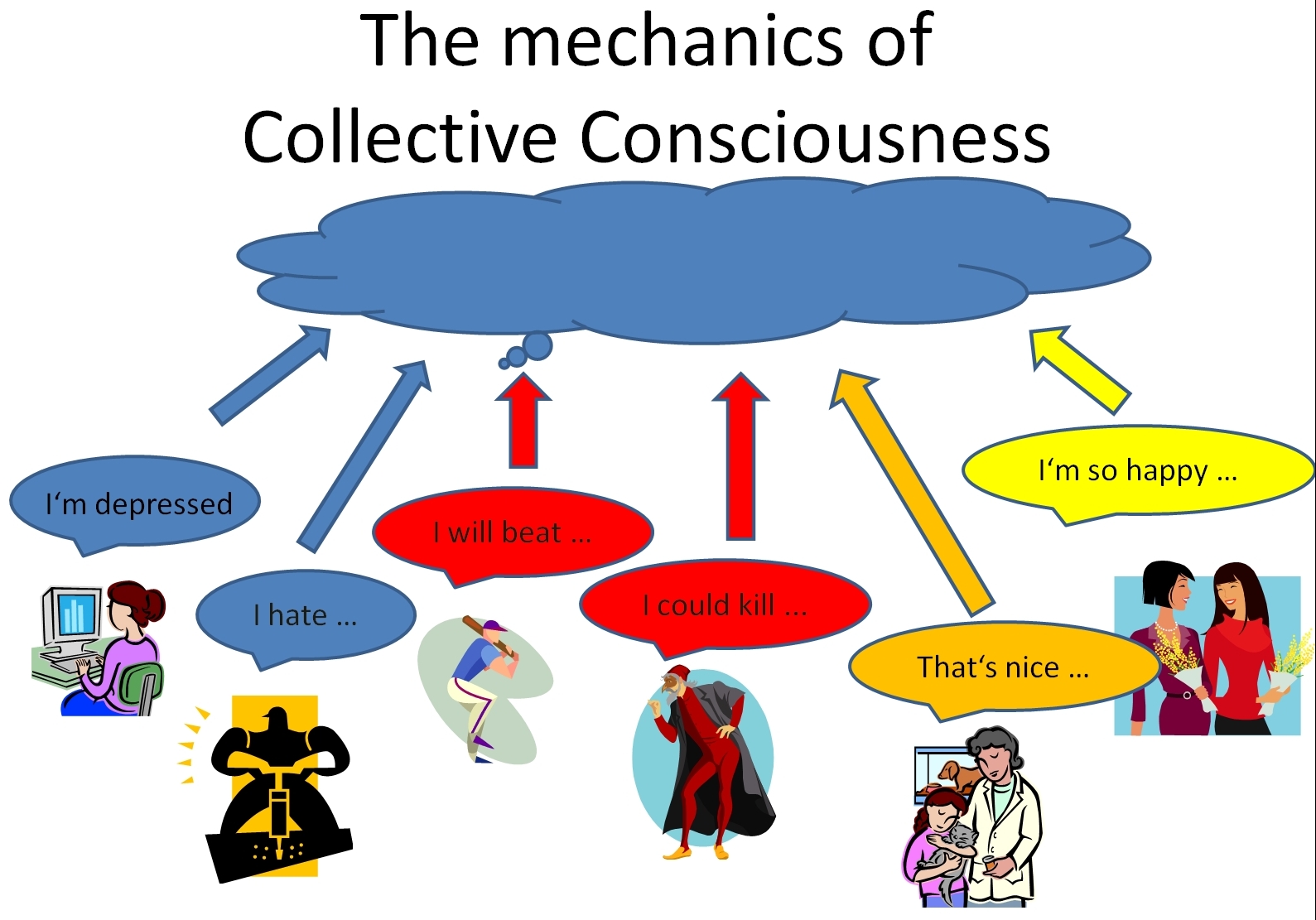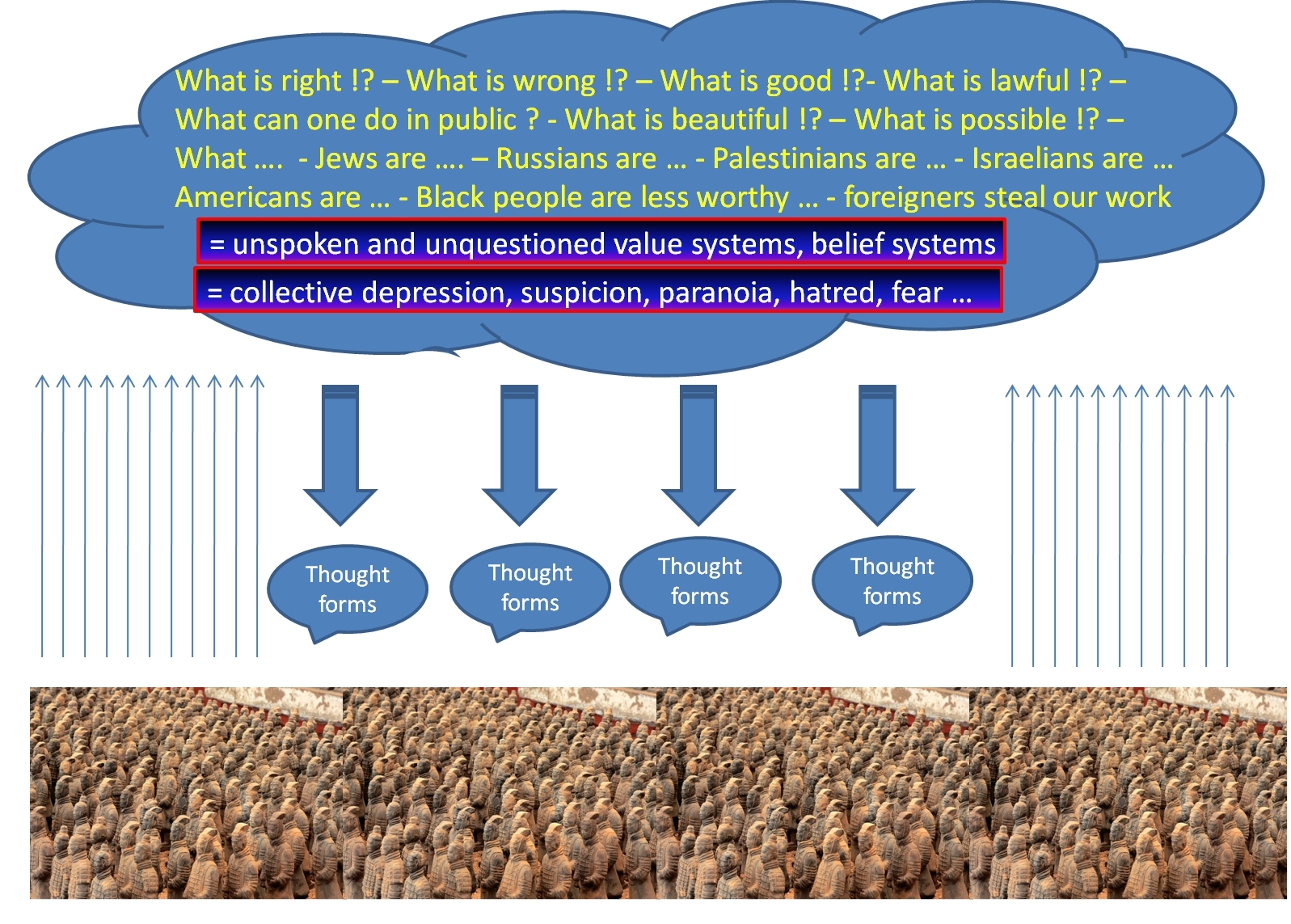 Just for repetition:
Just for repetition:There are seven layers of the human existence, which we will here condense to six:
| - physical level | body and environment |
| - energy or prana level | sense organs |
| - emotional level | mind |
| - mental level | intellect |
| - causal level | I, ego |
| - transcendental level | SELF |
Ideally the process of perception and action is a frictionless flow of energy from the outer perception (physical world) reflected in the mind, evaluated by the intellect and observed by the I, the ego.
In the ideal state the I identifies with its absolute, infinite, immortal nature, the SELF or the Pure Consciousness.
In the language of the Veda:
Atman realizes that it is Brahman. Tat tvam asi. Aham brahmasmi.
This
is the state of enlightenment. The ego is free of attachment or
identification with what is not its own nature. This is real vairagya -
detachment.
(By the way: detachment doesn't mean that there is no caring, no compassion, no love, no interest. On the contrary: one does not exclude the other ! Another misunderstanding by those who have projected their restricted state of consciousness into what they could not experience.)
But it also means full awareness of oneself and one's environment - and spontaneously taken this into account in every action. The flow of action has become aligned with the evolutionary laws of nature.
In a state of less awareness and greater conditioning, our perception, our thoughts are coloured and even mostly created by our impressions - and their interaction with the environment, and these are not directly emerging from the source of thoughts, the Pure Consciousness.
And there is another category of thoughts which arise in our mind, thoughts, which again do not originate from ourselves but from the Collective Consciousness. However, they appear as though they were our thoughts and we usually accept them as such never questioning them. So we are again trapped in an illusion.
The point in time, when one's consciousness becomes so clear and expanded that with one's knowledge and perception one can distinguish those thoughts from one's own thoughts, marks an important milestone on the path to freedom and enlightenment.
Or in the language of the Veda:
Viveka - the capacity of discrimination - has won over Maya
(literally: negating (ma) this what is (ya); this what does not exist; illusion).
Now let us see what is this collective consciousness.
(By the way: detachment doesn't mean that there is no caring, no compassion, no love, no interest. On the contrary: one does not exclude the other ! Another misunderstanding by those who have projected their restricted state of consciousness into what they could not experience.)
But it also means full awareness of oneself and one's environment - and spontaneously taken this into account in every action. The flow of action has become aligned with the evolutionary laws of nature.
In a state of less awareness and greater conditioning, our perception, our thoughts are coloured and even mostly created by our impressions - and their interaction with the environment, and these are not directly emerging from the source of thoughts, the Pure Consciousness.
And there is another category of thoughts which arise in our mind, thoughts, which again do not originate from ourselves but from the Collective Consciousness. However, they appear as though they were our thoughts and we usually accept them as such never questioning them. So we are again trapped in an illusion.
The point in time, when one's consciousness becomes so clear and expanded that with one's knowledge and perception one can distinguish those thoughts from one's own thoughts, marks an important milestone on the path to freedom and enlightenment.
Or in the language of the Veda:
Viveka - the capacity of discrimination - has won over Maya
(literally: negating (ma) this what is (ya); this what does not exist; illusion).
Now let us see what is this collective consciousness.
| Collective Consciousness |
Typical examples for such groups are:
- sex (male, female)
- religious belief
- nationality
- family
- cultural entities like tribes, clans etc.
- interest groups (different types of sports, music, philosophical and spiritual orientation etc.)
- politics
and many more.
Cultural (local) entities usually have a basic conditioning by the geographical location and the climatic situation. They create a certain framework. (People who live in the mountains think differently from those who live in the plains or near the sea.)
Every individual which is part of such a group (and often we are part of different such groups
 at the same time: like nationality, religion, politics) has its own thoughts and feelings.
at the same time: like nationality, religion, politics) has its own thoughts and feelings. These thoughts and feelings contribute (sort of feed) to the collective consciousness they belong too.
As a result certain emotional qualities, thoughts and mental concepts dominate this collective consciousness -
and this whole emotional and mental compilation feeds back on their creators.

The result is what we know as (collective) belief and value systems, which are usually unquestioned and generally accepted as reality and/or truth.
These thought-emotion entities take a shape, they have become rather solid thought forms.
(Solid in the sense that they are strong and dominating)
In this whole field of the individual interacting directly with its environment and other bodies (persons) as well as with abstract entities like the different manifestations of the (local) collective consciousness the different energies flow and interact.
Holistic Vedic Astrology presents a description of these energies and their dynamics and so makes them understandable and useable.
